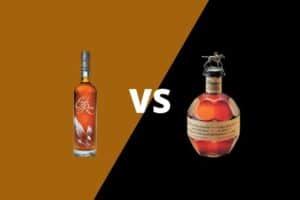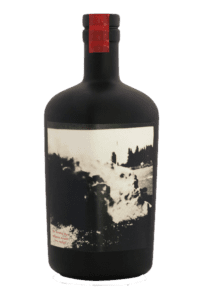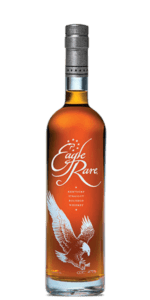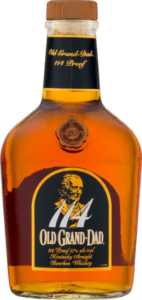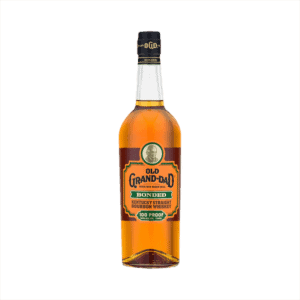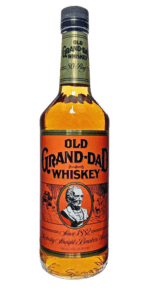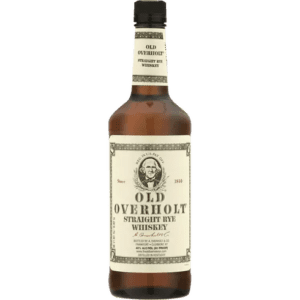Table of Contents
This week
It must be wonderful being the author (or the publisher) of a book that every media student – there are 13,500 applications a year – needs to buy; one that can’t be sold on, second-hand, because it’s out of date as soon as it’s published. Revel Barker looks at the new, 20th edition, of McNae’s Essential Law for Journalists (below and on the right) with envy, then asks: whatever happened to Artemus Jones?
Occasionally we’d get things wrong, which is one reason (among many) that the book is so important. Things conspired against us. Although they didn’t normally come in such numbers as the cock-ups that got the wrong score-line on a soccer match many years ago, as Andy Rosthorn remembers.
From Australia, Phil Harrison answers two questions that had been worrying us all for years: why did Brisbane’s evening paper print its Page One headlines in purple ink? And what happens when the picture editor decides to go out on the street and show the snappers how it’s done? I think we can guess the answer to the second one.
As the BBC ambitiously presumes that it can improve on Graham Greene’s desperately dark 1947 movie Brighton Rock which was scripted by its author and was probably the first book and movie to feature the newspaper readers’ quest to find Lobby Lud, Don Walker reckons it won’t be about the city he knows and, in spite of heartache memories, sort of loves.
And Colin Dunne, now freelancing and looking for a home for his golden words, discovers that Sainsbury’s is a supermarket for them
#
Essential information
By Revel Barker

The case was simple enough. A man called Cassidy was photographed at a racecourse with a woman he introduced to the photographer as his fiancée, and that is how she was described in a caption when their picture appeared in the paper. Trouble was, Cassidy was already married and his wife sued the Mirror on the basis that anybody reading it would assume that, if he could have a fiancée, she must have been living in sin.
So far, so good. The case is cited in McNae’s Essential Law for Journalists – just republished by OUP in its 20th edition – as an example of out-of-nowhere defamation that can plague editors.
But in this case it’s so far, no good. For all the rest of the story is missing from the book.
While one might sympathise with the effect of the caption on Mrs Cassidy and the conclusion her friends and neighbours could have drawn, what was the photographer (not a staffman, incidentally) expected to have done? Ask: ‘You say she’s your fiancée, but are you sure? Can you prove that she is? I mean, you don’t happen to have a wife at home, do you?’
What about the subs, the picture desk, the caption-writer? – ‘When this man describes his companion as his fiancée, did you check that he’s not already married?’
And the office lawyer: ‘Do we believe he was telling the truth, when he so described her?’
It was only a caption, for God’s sake.
What we need to know is what was done about it when the writ landed. Did the Mirror agree to an immediate apology to set things straight and put an end to the complaint? We know there was a case, because it is recorded in the annals (and appears in the Table of Cases at the back of McNae). But was it settled out of court, or in court? Was it laughed out of court? Or did it go to trial, and if so with what result?
All that McNae’s Essential Law tells us is that the woman sued.
I’ll fill you in. Mrs Cassidy, who had been living apart from her husband for eight years, never asked for an apology or any form of correction, nor had she even thought about legal action until a lawyer became involved with her case while she was actually trying to locate her spouse. Her solicitor told her the implication of the photo caption was that she had been living in sin, and their child would be seen as illegitimate, and encouraged her to sue. He managed an out-of-court deal for her with two other newspapers that carried the same photo.
The Mirror didn’t think the ‘defamation’ was worth anything. But the court – while accepting that in these circumstances the newspaper was not to blame for what appeared in its pages – decided to award her £500 damages… in 1929, when for that amount of money she could have bought a decent house in London, or a row of houses in the shires.
Also missing is the information that the Mirror appealed, and lost – on the grounds that it was their failure to check the information that had led to their error.
That’s why Cassidy v the Daily Mirror (1929) terrified – and should still terrify – journalists, editors and newspaper lawyers: there was nothing anybody could do to stop its happening again; it wasn’t their fault but it amounted to defamation and cost serious money. That’s why the case has been cited in every edition of McNae since the first one in 1954: it is important and historic. But the vital part of the story, surely, is the result. And that’s not in the book.
(Incidentally, when as a young reporter I was sent to write ‘colour’ during St Leger Week I was told that it was ‘illegal’ to photograph individuals at the races. Obviously there were permissible exceptions – what would Ladies’ Day be, without photos? But whether this was an actual law, or the newspaper industry’s reaction to Cassidy because it happened at the races, or merely a condition of admission onto Doncaster Racecourse, I never discovered. Whichever, it isn’t covered in McNae.)
Perhaps you can’t blame the current pair of editors – David Banks, former night editor of the Liverpool Daily Post who now lectures in media law at Sunderland, and Mark Hanna, ex-Observer, who lectures in journalism at Sheffield – who in many instances have just lifted the old content without adding anything to it.
But you might blame them for cutting some classic cases out of a reference work that now extends to more than 600 pages.
Another important ‘unintentional’ libel case was one that journalism students tended to remember because of the unlikely name of the complainant. And that very oddity was the root of the problem. This one has plagued the profession for a full century.
A reporter wrote an elaborate sketch of an early motor festival at Dieppe and referred to a man he called Artemus Jones – ‘who was the life and soul of the gay band that haunted the casino and betrayed an unholy delight in the society of female butterflies.’ He was also seen ‘with a woman who is not his wife.’
The problem was that there was a barrister (he was later a fairly famous judge) with the same name and he could prove that he had not been in Dieppe at the time the events were said to have occurred, and that the article made him a subject of ridicule among his friends.
The defence – this was the unintentional part – was that the newspaper confessed that the writer had invented the name, looking for something ‘fancy’, but sufficiently unlikely to be the name of an actual person.
Even then, that was about as far as McNae took us. Or used to take us, because although this was a fairly pivotal case when I was doing Law A-levels, and although it used to appear in McNae, I can’t find any reference to it in the current edition. Too old? Too trivial? Maybe nobody invents elements of stories these days.
Former editions refer to ‘substantial damages’ without revealing how the case – Jones v E Hulton & Co (1908) – was concluded. The newspaper that carried the story wasn’t named. We were not told whether they printed an apology (they did: one paragraph, and it didn’t satisfy Mr Jones, who instituted proceedings). We were not told how ‘substantial’ the damages were (£1,750, a hundred years ago). Nor did we learn that the newspaper appealed against both the judgment and the amount of damages, all the way to the House of Lords.
Law lecturers don’t tell you any of this either, presumably because all they know is what has been published in McNae, and they haven’t bothered to check out the rest of the story. If they try, they stand to be misled by other works on libel, rival publications to McNae of which there is no shortage, although Essential Law is required reading for all students of journalism.
Thomas Artemus Jones (he defended Roger Casement) is described in some other law books as a London lawyer and the defendant is described as a London newspaper, presumably because it was owned by Hulton. All of which means that those other authors didn’t know and didn’t bother to find out. In fact the plaintiff practised mainly in and around his home town of Denbigh, North Wales, and the newspaper was the Sunday Chronicle, published in Manchester; it circulated widely on the lawyer’s home patch.
Things got worse with the appeals. It now transpired that the lawyer’s name was well known in the area and had appeared often in the paper. Artemus Jones had started work after leaving school at 15… on the staff of the Sunday Chronicle. And the editor had been aware from the start that the name was intended to be ‘fictitious’. The Law Lords decided that the newspaper had been ‘more than reckless’, and dismissed the appeal.
Journalists are assumed to have enquiring minds, but they don’t get any of this fairly essential information from the book, not even from the back numbers. They are not going to ask their lecturers for it because, as I say, the case is no longer in the book.
But now they know it (if they have read this far) they should put their lecturers on the spot and ask the questions.
Earlier stewards of McNae, Tom Welsh (City University) and Walter Greenwood (Thomson Newspapers, Newcastle upon Tyne) assisted by the eminent libel solicitor Peter Carter-Ruck, included information about highly litigious players like Maxwell and Goldsmith, and frequently-sued defendants like Private Eye. That’s all gone, along with Prince Charles and the ‘Camilla Tapes’.
Even more recent cases – Aitken, Archer, Galloway, Hamilton – merit barely more than a paragraph and Prince William has replaced his dad with references to paparazzi harassment and phone-hacking. Nevertheless, even out of sheer interest, it must surely be worth emphasising the difference in damages between saying that a politician paid money to a prostitute (£50,000, News of the World) and saying that he paid her after having had sex (£500,000, Daily Star).
Liberace v Cassandra and the Daily Mirror has never had a mention, even though it’s a lesson about how you can’t get away with writing articles cleverly to make implications without actually saying, in so many words, what you mean (or what the jury thinks you mean), and in 1959 resulted in the highest award for libel damages ever paid out.
As a text book the 20th edition is attractively and in some cases brilliantly revised and redesigned. There are multiple cross-references and even charts to explain the hierarchy of the court system and how cases can move from magistrates through to crown courts or higher. Critics may think it’s just dumbed down (yeah, kids today, eh?) but it’s far more user-friendly than before. And virtually twice the length, and the weight, in case you need to have it posted. It used to fit into a jacket pocket, now it needs a briefcase.
But my gripe is simply that in a must-read book there are essential factors missing.
After all, we are journalists. We want to know the story.
McNae’s Essential Law for Journalists by David Banks and Mark Hanna. Published in August by Oxford University Press, paperback: 613pp, £19.99 – but there is currently a £7 (35%) discount, plus free postage in the UK, from amazon.
Revel Barker is the author of Crying All The Way To The Bank (Liberace v Cassandra and the Daily Mirror) published in June this year.
#
Hot metal v. the final whistle
By Andrew Rosthorn
Steve Tongue used his column in last week’s Independent on Sunday to make a neat apology for an error in the league tables recording the previous week’s Everton v Arsenal match result as 0-6 instead of 1-6.
‘Apparently we were not the only ones, but please make Louis Saha and the lads aware that leaving their best scoring efforts until the 93rd minute of a 5.30pm kick-off is not a recipe for maximum coverage in the first edition, whether or not the opposition have scored six beforehand.
‘Everton’s coach, Jimmy Lumsden, will understand that these things happen; he was Leeds’s assistant manager at Grimsby on the opening day of the 1982-83 season, when in the very last minute Grimsby scored what appeared to be a winning goal. This dramatic intervention was duly phoned over by a harassed Sunday Mirror reporter, who failed to notice that it was then disallowed. The match report duly appeared the following morning as a 2-1 win, when in fact the game had been drawn 1-1.’
Nice to know that Jimmy Lumsden has never forgotten how the Sunday Mirror got the Grimsby v Leeds final score wrong on the opening day of the 1982-3 season.
Neither have I – being one of a dozen reporters and sub-editors involved in a truly disastrous mix-up in the great days of hot metal and soccer violence.
Our paper not only got the result wrong, but robbed our readers of the eighth score draw on the pools coupon.
It was a very complicated shambles and much more than a mere mistake by a ‘harassed’ reporter at the match.
Most of us were only ‘Saturday staff’, but we took it badly.
The luckless match reporter was Noel Wild, a master of his craft and actually editor of the Nelson Leader and the Colne Times.
As an intrepid sports reporter, he was one of those entitled to wear the maroon Banned By Burnley tie, sported by J L Manning of the Daily Mail and all the many reporters, editors and photographers banned from the press box at Turf Moor for annoying Burnley’s aggressive chairman Bob Lord.
When Grimsby hit what looked like a winner in the ninetieth minute, Noel Wild was already dictating his match report over a landline to a copy-taker at Withy Grove in Manchester, then the biggest newspaper printing plant in western Europe.
His eyes were down, re-jigging his notebook, when the referee disallowed the goal.
Not serious. Often happens. On a normal Saturday, it would have been sorted out over whisky in the crowded Grimsby boardroom.
But it was the first day of the season and Mr and Mrs Wild had been invited to stay with friends in Lincolnshire. So Noel missed the boardroom.
Still not serious. The Press Association dealt with classified match results. Except that on that first day of the season, with phones plugged into corroded sockets in press boxes all over the country, and arguments about transfer charge calls, everyone was a bit rusty. The PA wire was running slow.
The Sunday Mirror northern sports editor, Peter Shaw, ran a big ship in those pre-Maxwell days. He had men at all the matches in the top two divisions.
I remember him telling me later that, ‘PA were slow, so I compiled our classified results from our match reports.’
Another chance to make amends went begging when the match photographer telephoned the picture desk.
‘Your film’s on the train. Send me back the Grimsby equaliser for Monday’s evenings.’
‘Equaliser?’ queried Siggy the picture desk man. But no penny dropped there.
Although the result was still wrong, we had yet another exceptional chance to get it right, gifted to us by the gangs of unruly Leeds United supporters who had wrecked part of Cleethorpes on the night before the match.
There was a news story to write for the front page: Soccer Violence Is Back.
I was the late reporter, so that story was my job, and I know I damned well got my result right for the front page.
Arrested fans had been dragged before magistrates and convicted at a special hearing.
Correspondent Charlie Ekberg of Grimsby had filed a full court report, so that all I had to do when I turned in for work at ‘around’ half past six was ‘top and tail’ Ekberg’s copy. The ‘tail’ was obvious.
There is a rule about reporting disasters at sporting events. I call it the ‘polar bear rule’, after Bill Tidy’s cartoon of a bear asking for ‘any news of the iceberg’ at the tail end of a queue of folk waiting outside the White Star offices for a Titanic survivors list.
So whether it be a big one, like Bradford, Hillsborough or Heysel, or a scruffy event like the 1982 Cleethorpes riot, you have to squeeze that scoreline in somewhere.
Who was winning when all hell let loose again?
It was utterly irrelevant but essential. So I went and got myself the correct 1-1 result from a dog-eared copy of the Manchester Evening News sports final edition, lying on the news desk.
I hammered out my last par on one of those Daily Mirror Olivetti typewriters, chained to the reporters desk, so that result was definitely correct when night editor Peter Hollinson sent my story over to his splash sub.
But somehow, we still managed to get that result wrong, front and back, when our paper hit the streets of Yorkshire and Humberside.
Noel Wild offered his resignation on the Monday. Chief reporter John Sheard was sent on Tuesday to apologise in person to the Mayor of Grimsby.
On Thursday, when I walked into Withy Grove to collect my expenses, the chief cashier said, ‘After what you wrote last Saturday, I don’t know how you dare show your face in here.’
It was years before I found out what went wrong, after the splash sub, deploying the pessimism that went with that job, decided to check the single fact in the story that was easy to check late at night – that 1-1 scoreline, stuck in the final paragraph to comply with the polar bear rule.
Did it agree with the classified football results in the back?
No. It matched neither classified results nor match report from a by-lined sports reporter. Bloody polar bears!
No time to waste. Shuffle twenty feet across the office to the sports editor. Get correct result from sports editor.
Call out, ‘Copy!’ and fire it off, pneumatically by Lamson tube, to the composing room above.
And that’s how, with half a dozen chances to get it right, we got it wrong.
I met the luckless splash sub last year. As I was telling the rambling story in a pub in Saddleworth, Manchester, my old pal Jan Needle piped up. To my astonishment, he remembered subbing the story that night.
‘Bleeding long time ago. Noticed something odd about the story. Would have been too dicey by half for me to alter a scoreline. As I recall, I asked the sports desk, probably Pete Shaw. They amended the score. That’s how it went up and that’s how it went in the paper.’
I groaned, remembering that fresh from playing our little parts in that awful disaster, we two ‘casuals’ would almost certainly have gone out on our break together that night.
We wouldn’t have been talking shop and we’d have been blissfully sinking our pints in the Lower Turk’s Head as the mighty presses of Withy Grove rolled with that eighth score draw missing from the Sunday Mirror – front and back in all editions – on the first day of the football season.
#
Purple prose
By Philip Harrison
When I joined Brisbane’s then afternoon tabloid, The Telegraph, in 1956, it still used purple ink for its page one banner headlines. This had been going on for years and was unusual, to say the least; it was the only newspaper in Australia to use this style of presentation.
I discovered the truth during a marathon drinking session one night with the news editor who confided that to mark the Queen’s visit to Australia in 1954 – the first by a reigning monarch – a Telegraph executive had the bright idea of marking this historic occasion with an appropriately coloured ink for page one—royal purple.
The trouble was, he ordered too much, and senior management decided that the purple headlines would continue until all the ink was used – many years after the visit had faded from memory.
This visit had also provided proof that newspaper photography is best left to the professionals.
Executives at the Telegraph were determined to beat the rival morning paper, the Courier Mail, to get the first picture of the royal procession down Brisbane’s main street, Queen Street. This was due at 3pm on a Tuesday. Normally, this would be too late for the Telegraph final edition given the time lapse between a photographer taking the picture and the long process to make a metal plate of the photograph and print it – meaning that the Courier Mail first edition next morning would carry the first pictures (there was no TV in Brisbane in those days).
The Telegraph pictorial editor, Laurie Whitelock, had a brainwave. The royal procession would pass the office just after 3pm. If all the technical people –the developers, process workers, printers – could be put on standby and the whole paper be made ready for printing except for a hole in page one, it should be possible to take a photograph and push it through the system super-quickly and still print the paper on time for its city-wide distribution. But Laurie did not trust his staff of photographers. ‘They’ll only fuck it up,’ said. So Laurie took a Speed Graphic press camera outside on to Queen Street and joined the huge throng of people awaiting the royal cavalcade. He had not expected so many to be there. He could track the progress of the royal visitors by the cheering, which was growing louder the closer the procession got to where he was standing. Try as he might, he could not push his way to the front of the crowd.
So, as the royals passed the Telegraph building, Laurie muttered a quick prayer, lifted the camera over his head, pointed it at the royal car and fired the shutter and flash. He raced back into the building, ripped the plate from the camera and ran to the darkroom with it.
Crowded round the developing tray were Laurie with his fingers crossed, staff photographers angry at being snubbed and hoping for a cock-up, and the blockline writer, having pre-written a caption and wanting to check that it covered what was on the picture. Gradually the photograph became clear. The photographers laughed. Laurie looked as if he was about the cry. Just as he had clicked the shutter, a man in front had thrown his hat into the air. Laurie had a lovely picture of an Akubra in mid flight. The front wheel of the royal car could just be seen at the right of the photograph.
#
Sun, sea and a sadness called Maria
By Donald Walker

I wouldn’t be surprised about the Sodom part, though I don’t really care to lend a great deal of thought to it, but what did they get up to in Gomorrah that led to this type-casting? It sounds more like an Irish curse than a sexual deviation involving straps, leather and a portable defibrillator.
I suppose the best we can hope for is that, whatever it was they were doing in Gomorrah, they cleaned up after themselves and went about looking sheepish for the rest of the weekend.
Whatever epithets you may gaily chuck at it, Brighton is one of my favourite places: it has sea, pebbles, occasionally some sun and lots of fun, singing and dancing, bonnie girls and even a sparkling, restored bandstand on the front. And about time – the bandstand I mean; it is an Edwardian delight that was disgracefully allowed to rot for many years but now is beautiful enough to encourage me in the fantasy that I may play my tenor horn on it one day.
Keith Waterhouse gave up on Brighton many years ago – too many backpackers sitting on their bums, I think. He described it famously as having the shifty air of a place that was helping the police with their inquiries. But he should have been more forgiving: it cares a good deal about its community, has lots of wonderful pubs, is alive with music, and the police are actually nicer there than anywhere else in England.
A Brightonian friend who decided to save on the rates and live in an old van she’d done up herself was once rescued by police from a frightening attack on her ‘home’ by drunken yobs. The cops saw the idiots off and told her: ‘Park your van round the corner, love. You’re a sitting target on the main road.’ This astonished the free-spirited Mindy who has travelled all over with her van. ‘Anywhere else they’d have had the council down on me like a ton of bricks,’ she told me.
I could go on endlessly about Brighton’s virtues, if not its virtuousness; but it also hides a terrible, unforgivable scar. It’s not often the bandages are unwound to reveal this livid wound, but I make no apologies for doing so.
In the early seventies it was the first community whose social services came under the microscope for failing to protect a little child from harm.
Maria Colwell. The passage of the years may well make me forget my own name but I shall always remember hers. She was a normal, happy little girl at the start, pretty and dark.
She was fostered out because her mother Pauline couldn’t cope; her substitute parents found her a delight. But for reasons only the gods know, Pauline asked for Maria to be returned to her to live on Brighton’s Whitehawk council estate with her and her new partner.
Though I know it, I’m not going to write his name here, for this monster does not even deserve the recognition of calumny.
From the start, this so-called stepfather treated Maria rough. He had children of his own and favoured them, typically buying them confectionary and ice creams and making starving Maria watch as his spawn ate.
Soon Maria’s teachers and the estate neighbours remarked on her skeletal thinness and the bruises. One teacher in particular made it her mission to drawn the authorities’ attention to the child. To no avail.
On January 6, 1973, her beaten body was wheeled by Pauline in an old pram to Brighton’s Royal Sussex County Hospital. She had severe internal injuries and brain damage and died shortly afterwards. She was seven years old.
I know what happened that night. The creature who was head of the household returned from the pub drunk to find Maria watching television. He told her to go to bed. I think it speaks a bible for the human spirit that guttered inside her but was still burning that she cheeked him back. He beat her to death for her impudence. Even now, 36 years later, I weep to write those words.
I know, too, that a public inquiry was convened and held later that year not far from Brighton’s Churchill Square. It was attended by Maria’s neighbours and the teachers who cared.
Also present were Maria’s mother Pauline and her new partner, a Michael Valentine. Both of them were drunk. Valentine got into a scrap with the policeman on the door. The copper, whose name I think was appropriately Bob, was a large, amiable chap who had only a little trouble quelling the drunken, demonic Valentine; I helped slightly by shoving my shoulder into Bob’s broad back as he smothered the idiot’s flailing arms and legs.
I’ve always thought it typical that my so-called colleagues stood around and fired off flashes at f7 as I struggled at the centre of this goal-mouth melee. Thanks, chaps. Mind you, a nice picture of me in a rather lovely grey suit appeared in the Daily Mail the next day. Pity someone had his forearm around my neck.
I was sent in as the Mirror second wave to write a colour piece on the inquiry. The first wave, in the delightful bulky form of Ed Vale, was stationed at the Royal Albion Hotel down by the Palace Pier. This master of the revels greeted me at the station with a bright gleam in his eye: Aha! Another member of the drinking squad.
Ed’s job was to write the daily lead on the inquiry, which he did superbly, and then demonstrate to Brighton what real drinking was about.
On my first evening, as I was assiduously writing up my notes, he knocked on my door to announce: ‘Thingy from the Sun‘s arrived. Come one, we should go out and have a bevy with him.’
Aware of my alcoholic responsibilities, I hopped into Ed’s taxi to arrive with alarming rapidity outside a club on the front. Inside we were eyed up by several ladies who licked their lips appreciatively; one of them had a cauliflower ear and another looked as if she could go 10 rounds with Randolph Turpin: and win.
‘Is Thingy from the Sun here?’ I asked Ed nervously avoiding eye contact with the female pugilists.
‘Thingy? Oh no, he’s down the Turk’s Head. I thought we’d have a couple here to limber up. Don’t fancy yours.’
And so it went on. Whatsit from the Express was there and Whosis from the Telegraph and even Lardydardy from The Times. Pull on your drinking boots, lads. Clear the gangway, girls.
I remember ending up in Ed’s room swilling something from the night-porter’s bar (it wasn’t called room service in those days) while Whosis and Thingy danced with two ladies I’d never seen before. Someone had found dreamy dance music on the room’s radio. Unfortunately, it had segued at some point into the shipping forecast; but nobody seemed to notice. They carried on swaying hip-to-hip to, ‘Rockall, fair. Seas rough. Visibility: Good, becoming moderate or poor later.’
La-di-da.
I filed copy earlier that evening featuring my struggle with the kindly bobby and the crapulous Valentine, but it was felt to be too contentious by the night-lawyer. So, with a frightful hangover, I re-filed the next day and unleashed such poetry as was in my soul in a sad requiem for Maria.
I interviewed at length Maria’s soft-hearted teacher in her neat home near Kemp Town; she who cared so much that she gave herself a nervous breakdown. I attempted to speak to the egregious Pauline but was told to fuck off by the fighting Valentine. The copper on the door was generous with background and vignettes of the principal characters. And the splendid Ed was as unselfish with his notebook as he was with his drinking money. Well, the Mirror‘s drinking money to be accurate.
The inquiry made a lot of fuss and spewed out lots of words. But shamefully little was done, and almost nothing achieved so that we still had the horrors of Victoria Climbie, Stephen Meurs, John Auckland, Wayne Brewster, Darren Clarke, Jasmine Beckford and Kimberly Carlile to come in our future. What kind of future is that?
And the one contact I wanted to make, the big-eyed little girl whose story I really ached to write wasn’t available for comment. I think of her from time to time in that happy place by the sea, in the sunshine and amid the singing she is missing. And when you go to Brighton, you should think of her too.
Maria.
#
A super market for copy
By Colin Dunne
Time, I think, for a little philosophy. A career in journalism is like a funnel. You start off at the narrow end, on, say, a weekly paper in the Yorkshire Dales. As you move off, through Darlington, Halifax, Manchester, the funnel widens; every place is different, packed with new and exciting people.
Then, at some point unknown to you, some clever sod turns the funnel round. You find yourself going back into the narrow end. You keep meeting the same people you met before. In El Vino, you see Roy Stockdill, last spotted in the Bull in Halifax. In the Stab, you see Alastair McQueen, famed in Manchester for his regular plunge into the typists’ pool. Tom Petrie, who looked like an unmade bed in Huddersfield and Newcastle, still looks like one but now he’s on the Sun news desk.
So I shouldn’t have been surprised when, ten years after I’d left the Mirror, the telephone went and there was the pleasing light tenor of Mike Molloy, or that bloody Molloy, as I may have called him.
Let me explain. There are only two sorts of editor. There are the ones who use your copy: they are excellent editors. Then there are the ones who don’t use your copy: they are – you’ll be amazed to learn – crap editors.
When Mike was editing the Daily Mirror the paper had enough room for about four or five writers. They also had about 50 writers. I was among the 45 left in the features catacomb. Several had been there so long that if you touched them they turned to dust. When I left, I must admit that I did so with a flounce that would have embarrassed Violet Elizabeth Bott. If I did speak unkindly of Molloy from time to time, it was only because under the Hacks’ Law of Simmering Resentment, the editor is always guilty.
Yet that one telephone call moved him, in a second, into the league of journo of genius. Editor, designer, writer, cartoonist, novelist, wit and, more to the point, at that moment the editor of Sainsbury’s Magazine, which had loads of space. Pages of it. Acres, possibly. Enough to run a small herd of Ayrshires with room for a couple of rows of potatoes.
And Mike Molloy, fine fellow if ever I saw one, chose the writers.
A man of impeccable taste and refined judgement… have I mentioned this already? Only the best would do for Molloy, oh yes. And here he was ringing me, and I didn’t even have to sleep with him (although I had my wincyettes in my briefcase, just in case).
As briefings go, this one was exactly that. Brief. ‘Two thousand words,’ said Mike Molloy. ‘On happiness.’
Pencil poised, I said that was fine. ‘What sort of piece?’ I inquired.
‘Whatever you fancy,’ he said, quite calmly. ‘See what you can do with it.’
After years of knocking out eight-par page leads for the tabloids and comical bits for the magazines (which always began ‘Hey girls, here’s ten ways…’) this was… well, freedom. Like taking someone off a seaside beach donkey, and putting him on a Derby winner in the middle of Salisbury Plain – oh yes, and without a saddle.
Terrifying and exhilarating in equal measure, and when I typed the last full-stop, completely satisfying.
With Molloy in charge and lots of space, this was getting close to heaven.
I went down to see him at his offices on the South Bank. He’d teamed up with an old friend, publisher Michael Wynn-Jones, with whom he’d run Mirror Magazine years earlier, when they had employed MWJ’s girl-friend Delia as a cookery writer. He later married her. But she kept her professional name, although I always thought Delia Wynn-Jones sounded better than Smith. No wonder she never got anywhere.
He was as slim and dapper as ever. The only changed wrought by years of success was that he appeared to have stepped out of a Zhivagon winter, with hair and moustache gleaming white. And now that he was employing me he was somehow… well, just better.
Sainsbury’s Magazine was unusual, possibly unique, in that they sold it through their stores for the then price of £1 (now about £1 40, I believe) and they cleared well over 300,000. Since they had no wholesalers, no distributors, no newsagents to pay off – and that lot take over half the cover-price – this meant they kept exactly 100p in ever £.
Who needs W H Smith with a deal like that? This was the mag that put profit in profiteroles…
Oh. Sorry about that.
The magazine itself was high-quality since it was aimed at Sainsbury’s shoppers who were, mostly, people whose lips remained still as they read. It was a handsome production all round and at £850 a shot, most writers were happy to take their calls. True, most of their features were food-based, but writers were encouraged to broaden them out to make general-interest pieces. And some, like Happiness, had nothing to do with food at all.
Every job I did for Mike-with-space was pure joy. I did quite a few for a series called Anatomy of an Ingredient. The first was the almond. An eye-shaped nut. Does that sound exciting? Perhaps not. Let me add this, then. To do it, I had to visit the almond orchards of California, and to get there I had to fly Virgin as the guest of the Almond Growers’ Assocation, who I believe were put on this earth to make hacks smile.
I had to fly Upper Class. That was the deal, like it or not. To get to the airport, I had the hideous embarrassment of having a white stretch Merc arrive at the front door with a uniformed chap to take me. At Heathrow, I was fast-tracked through so as to avoid the risk of brushing sleeves with Lower Class people. The PR team were a little nearer the tail, probably in Upper Middle Class, and worrying whether they were holding their knives correctly.
In Virgin Upper Class in those days, the practice was to hold the passengers down while voluptuous stewardesses forced gourmet delights and champagne between your lips. As you sleep, they stuff your pockets with wads of dollars and naked women are specially commissioned to frolic through your dreams.
The only complaint I had was that I was left to work my own lungs. Room for improvement there, I think.
For those who believe in the power of nature, it was a great story to write. In the San Joaquin Valley, 7,000 growers occupy 400,000 acres to supply 80pc of the world’s almonds. It is the heart of a highly sophisticated, intensely mechanised, global marketing system. Tiny robot trolleys trundle round shaking the almonds off the trees. Huge vacuum machines sweep them up.
But nothing was happening.
Beekeepers had been handsomely paid to bring in their hives. Here and there, a bee would saunter out, have a look around, go back in. It wasn’t warm enough for them. If conditions aren’t right, bees stay home. No bees, no pollination, no nuts. So the whole international industry – delivery trucks, salesmen, supermarkets – had to wait. The man from the almond growers glared at the hives with a murderous look. ‘One day,’ he hissed,’ we’ll invent a self-pollinating tree – and these little sons-of-bitches can starve.’
To Western eyes, Pete Yamamoto and his wife, almond farmers, had those Japanese faces which are completely unreadable. When I asked them to stroll beneath the blossom for a pic, he said, a little stiffly, that it was quite impossible. Desperately, I tried to scramble back from whatever gaffe I’d made. Had I unknowingly hit a nerve?
‘My wife,’ he carried on, ‘has to defer to me at all times, which means she has to walk two yards behind me. It is our culture.’
As I stumbled out an apology, his wife gazed up at him adoringly as her rosebud mouth framed her reply: ‘In your dreams, sunshine.’
Then they both burst out laughing. As second-generation immigrants, on the outside they look Japanese, but inside they were pure American.
Working for Sainsbury’s had many benefits, the most obvious of which was food, glorious food. Wherever I went in the world, I was dealing with foodies. They were determined not to let me die of starvation. Ordeal by Food, I called it.
In Aguilas in Southern Spain, I was there to study the caper – those little green chaps you find sitting on top of your pizza. Aguilas was a lovely town of fishing boats and shady squares. Those civilising teams of missionaries from Britain, the package holidaymakers, had yet to get there with their inflatable breasts, their unquenchable desire for cerveza, and endless renditions of Una Paloma Blanca.
In the absence of the Great British Belly-buster Breakfast, I had to eat Spanish. ‘A quick snack,’ said my guide Manolo. It took three hours, but it was still quick. To get through ham with olive oil, peeled prawns with red pepper on bread spread with garlic mayonnaise, tuna with tomato and red pepper sauce, grilled roe of tuna, and grilled pork steaks in three hours, you had to get a move on. Which meant I had to skip some of the capers on slices of brie, caper berries on anchovies with red peppers, and squares of bread laden with cheese, pineapple, tomato, pate and red peppers – with a sprinkling of capers on each one, of course.
But then, we Sainsbury guys knew the value of restraint.
Oddly enough, we did have difficulties getting pix of the peasants picking capers. I suspect this was because most of the picking is done in Morocco because the Spanish are too busy picking young British tourists off the floor.
In Jamaica, I almost lost a photographer. Now I know this is a risk of our trade, and I wouldn’t be the first to lose a snapper to drink or to lust, or, more likely to a combination of the two. At least they come back later (if it’s lust, about five minutes’ later). But in Jamaica I nearly lost the lovely Debbie Rowe to marriage. They didn’t even ask me to be best man.
This was another of those enviable Sainsbury missions, this time to study the pimento, or all-spice, in the Caribbean. At that time, worldwide demand for the pimento far outran supply, which you would think would be good news for places like Jamaica where it grows. Not so. Wages for picking pimentos off the trees can’t compete with wages in tourism, so they stay on the trees. The pimentos.
On his 200-acre estate high above the blue-green Caribbean, Hugh Lyon watched as the birds and the thieves stole the berries from tens of thousands of trees on his estate. His family – French, English and Irish – had been there for ten generations. His face was white, but his accent was pure black Jamaican. At one time, visitors’ cars crunched on the circular drive outside his cedarwood mansion; servants brought Earl Grey out to those playing tennis, and everyone took cocktails on the verandah.
All gone. What was left was the shuttered doors and windows because it had been burgled so often; the jungle had reclaimed the tennis courts and drive; and 72-year-old Hugh was left looking after his 93-year-old mum in a bungalow where once a servant lived. Fending off the jungle and thieves, one night he snatched up a machete to chase a gunman down the hill.
Looking at poor old Hugh and the place, you’d say it was a battle lost. At the sight of our Debbie, however, he perked up remarkably. That was exactly what he needed, he said: a young wife, an energetic and hard-working woman who could help him restore the estate to its old glory. He was a tottery old guy who didn’t look like a man who got to meet lots of what I believe are called hot chicks. Debbie, then around 30, I suppose, was hotter and chickier than anything he’d seen in a long time, and his damp blue gaze rested on her without blinking. ‘With a woman like that,’ he said, ‘I could soon get this place in shape.’
With a woman like that, I thought, he’d be in intensive care by lunchtime. We shall never know because the lissom Debbie showed no interest in restoring his fortune and his estate. He wanted her hand. The only thing she gave him was F8 at 15ft.
I bet Arthur Edwards would’ve taken his arm off.
I even enjoyed spending three weeks touring Britain in search of the finest fish-and-chips. I visited O Sole Mio, The Right Plaice, and any number of Fryeries and Batteries, and emerged smiling and three-stone heavier. Near Glasgow, I did find the classic Scottish fish supper supplier where they deep-friend Mars bars. And black puddings. And steak and kidney pies. And pizzas. In fact, they deep-friend everything. As the proprietor explained: ‘This is the heart attack capital of western Europe and we’re proud of it.’
The best, I seem to remember, were fried by a Mr Patel in Blackpool. When it came to food, that was where Blackpool’s gourmet reputation rested. Later, another magazine sent me back to the town to gauge how the north was keeping up with the increasing sophistication of the southerners. ‘See if they know about sun-dried tomatoes,’ was the somewhat patronising brief. Somewhat accurate too.
When I asked for sun-dried tomatoes in a busy shop at the back of the Tower, the young girl asked me to repeat it, and then turned uncertainly to an older man. ‘Dad,’ she stage-whispered, ‘there’s a feller ‘ere who’s asking for some dried tomatoes…’
‘Tell ‘im we only do fresh,’ he said.
All in all, I was delighted to welcome Molloy back into my life again. But I’m a bit worried about that theory of mine about the funnel effect. If it’s true, I could end up back on the Craven Herald with Mr. Waterhouse warning me yet again about wasting pencils through excessive sharpening.
###










































